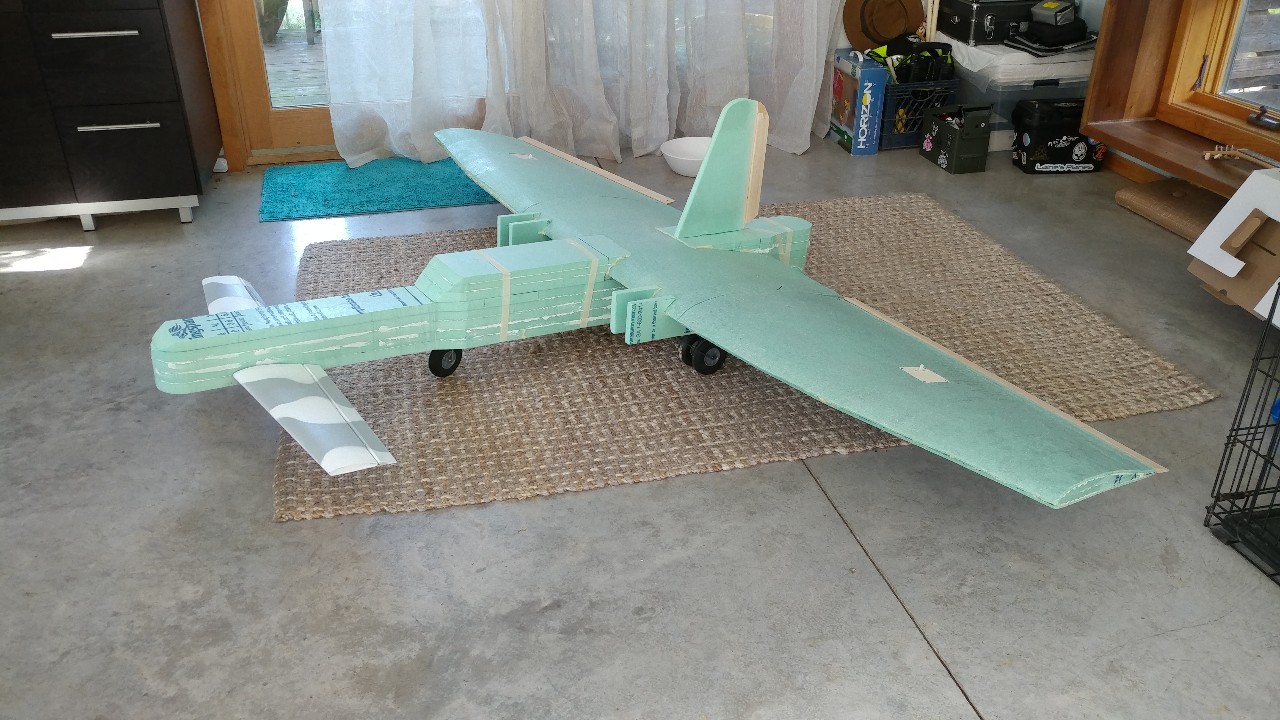I've got an idea... Not sure if its a good one though.
So with my recent reduction in airplane storage space, I'm back to looking hard at a way to keep the fuselage and center wing section detachable.
What I've come up with is using a thin plywood plate - shown here sitting on top of the wing, glued to the bottom of the fuselage. Before I glue that in, I'll take two 30" fiberglass arrow shafts and recess / glue them into the bottom of the fuselage to help carry the load of the nose landing gear and batteries back to the main structure.
Then I'll punch six 5/8 holes vertically through the fuselage and glue in pieces of the 1/2" dowel with gorilla glue to match the holes I already drilled in the plywood. The plywood plate gets glued to the bottom of the fuselage, over the arrow shafts, and screwed into the dowels for good measure.
There is already a plywood mounting plate in the wing, and that will be screwed into the dowels for the removable portion of the connection. This makes those 6 screws the full and final mechanical pieces that take the whole load of connecting the thrust of the motors and lift of the wings with the weight and lever forces of the batteries and nose landing gear. So, fingers crossed, this will at least get me through a couple flights...

Oh, and I also realized looking at pictures of her fully assembled on the ground, that I'm going to need to cut a pretty good sized angle of fuselage off the back so it won't hit the ground trying to rotate up on takeoff. It'll be a little sacrifice to the scale look, but necessary at this point in the design unless I were to start over with the main landing gear and try to get another 3 or 4 inches of height. And even if I did that, she might still need the tail trim.
@PsyBorg how tall are the rear turret assembly parts that need to be recessed into the fuselage? I want to make sure I don't chop off too much


















